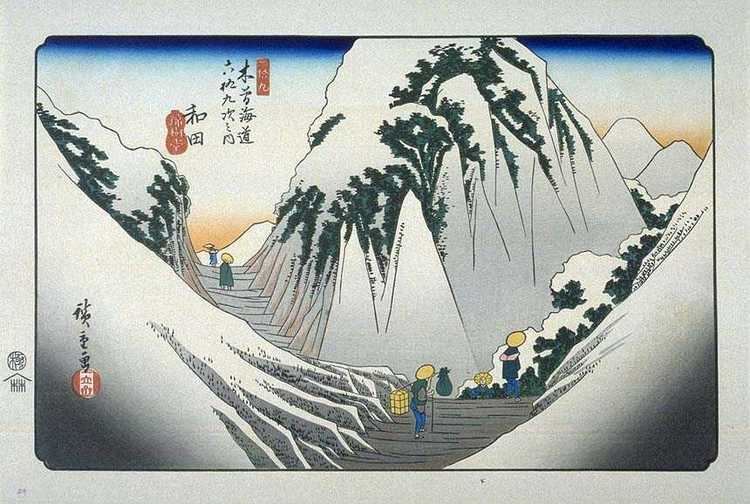 | ||
Wada-shuku (和田宿, Wada-shuku) was the twenty-eighth of the sixty-nine stations of the Nakasendō highway connecting Edo with Kyoto during the Edo period. It was located in the present-day town of Nagawa, in the Chiisagata District of Nagano Prefecture, Japan.
Contents
History
Located at an elevation of 820 m (2,690 ft), at the entrance to the Wada Pass, which was considered one of the most difficult portions of the highway because of it steepness. Because Shimosuwa-juku, the next post station, was over 20 km (12 mi) away, Wada-shuku flourished with over 150 buildings to accommodate all of the travelers and their pack animals. Wada-shuku was approximately 49 ri, 24 chōfrom the starting point of the Nakasendō at Nihonbashi, or about 195 kilometers.
Per a 1843 guidebook issued by the Inspector of Highways (道中奉行, Dōchu-būgyō), the town had one honjin, twowaki-honjin, and 28 hatago, with a total resident population of 522 people.
Most of the town was destroyed by a fire in 1861 and rebuilt. Presently, there are remains of both the honjin and original houses, which are being restored and preserved. The area is a tourist attraction for Nagawa town. The area has also long been known for its vast resources of obsidian, which have been exploited since the Jomon period.
Wada-shuku in The Sixty-nine Stations of the Kiso Kaidō
Hiroshige's ukiyoe print of Wada-shuku dates from 1835-1838. The print depicts an exaggerated view of Wada Pass in wintertime, with Mount Ontake appearing in the upper right corner.
